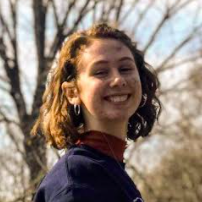Introducing
Regina Gravrok

CLT recently hired Regina Gravrok, our first-ever CLT examinee to work for the company. She agreed to share a little with us about her own experience with the test and how she came to be interested in our broader mission.
CLT: Thanks for joining us, in both senses! Tell us a little about yourself.
Well, I’m from Eau Claire, Wisconsin, and I’m currently studying at Hillsdale College. I love the great outdoors, music, books, and good company.
CLT: What was your own education like?
RG: As a homeschooled student, I always considered my personalized education a blessing. I was able to slow down on the subjects I struggled with, and dive deeper into the subjects that excited me. Today, I am entering my junior year, pursuing an English major and loving every minute of it.
CLT: I understand you tried some more conventional college entry exams first. What was your initial experience of standardized testing like?
RG: Well, having been accustomed to this personalization, the standardized testing that high school brought on was unfamiliar terrain. How would I hold up when compared to other students? Impostor syndrome immediately kicked in. “What if I’m actually a really bad student and mom just lied to me for eight years?” My mother assured me that I was overreacting a bit, and encouraged me to take practice tests to get comfortable with the format.
As I practiced and read books on testing tips and tricks, I felt more and more that the tests were measuring my ability to take a test rather than my knowledge and intellect—the faculties I spent my entire education cultivating. I found myself memorizing acronyms and learning how to guess the right answer without even reading the question: the exact same “teaching for the test” that my family tried so hard to avoid by homeschooling.
CLT: How did you discover the Classic Learning Test?
RG: My mother introduced me to the CLT as an alternative, and my interest was piqued.
CLT: Why’s that?
RG: Not only was the exam shorter, she also claimed its classical roots meant it actually measured my ability to read, understand, and reason. The first practice exam proved her right. The texts reflected what I read in school, often sharing the same authors from my reading lists. There were no formulas to memorize for guessing the right answer; to do well, all I needed was to use the intellect I had earned through years of commitment in school. When I finished my first real CLT in junior year, I was able to look with pride on the score I earned, knowing it was a result of years of quality schooling instead of a few months of cramming. What’s more, when I retook the CLT at the end of my senior year, I improved my score by twelve points—a full ten percent of the questions on the exam.
CLT: Congratulations! What happened after that?
RG: I ended my college preparation with a commitment to Hillsdale. I was excited about their focus on excellence in education, a focus that CLT shared. Thanks to my high score, I received an increased financial aid packet that made my attendance of my dream school a reality. My impostor syndrome was defeated by my experience with the CLT, and it continues to be proven wrong every day as I excel among my incredible peers at Hillsdale.
CLT: That’s great. Lastly, any words of advice to current students and their families?
RG: To any homeschool student, or parent, who is intimidated by the unknown of standardized testing, I was there! I, too, was terrified at the prospect of such an unfamiliar but influential part of the college preparation process. But my experience with the CLT proved to me that homeschool students can and do excel in the college sphere. Personalized education will never be a mistake. It creates students capable of independent and rational thought, which is a commodity that will never lose its value.
___________________________________________________________________________________
Thanks for reading the Journal! Check out some of our other articles on the great ideas of history, like citizenship, logic, or war and peace.